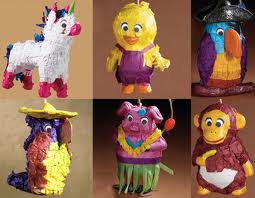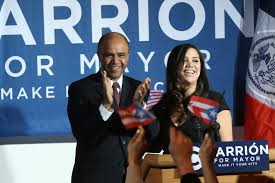U.S. Latinos's growing influence from piñatas to presidentes
U.S.
Latinos’ growing influence
From piñatas to presidentes
By Carlos Giron
“Se habla espanol: Presidential campaigns using Spanish to woo a fast-growing block of voters” reads the headline of an Associated Press story published in the Washington Post, which highlighted the significant expenditures being made by both presidential candidates to produce campaign ads in Spanish. In a similar vein, “Yo Decido” was the headline of Time Magazine’s much buzzed about article published earlier this year attesting to the growing power and influence of U.S. Latino voters and speculating that Latinos could decide the outcome of this year’s presidential elections. The news reports and commentary go on and on.
Aside from the media, many political experts are making equally
bold calls declaring that the U.S. Latino vote will be the “swing
vote” that decides who occupies our nation’s highest public
office. “In the 15 states that are likely to decide who
controls the White House and the Senate in 2013, Hispanic voters will
represent the margin of victory,” declared former Florida
Governor Jeb Bush in a Washington Post op-ed earlier
this year.
Why is so much attention being paid to the U.S. Latino electorate?
- According to the U.S. Census, at 50.5 million, the U.S. Latino community is the largest minority group in the United States constituting 16.3% of the nation’s population.
- In 2008, President Obama won 67 percent of the Hispanic vote, while Senator John McCain won only 31 percent. In 2004, former president George W. Bush earned 44% of the Latino vote helping him to win reelection. This year, there are approximately 22 million eligible Hispanic voters, a number that could go much higher given the concerted efforts being carried out by organizations like NCLR, NALEO, LULAC and Voto Latino to register new voters.
- The Hispanic community’s share of the nation's total population is projected to double, from 15 percent to 30 percent by 2050. By then, nearly one in three U.S. residents will be Hispanic.
- For communications professionals, the message is crystal clear. This is a large and growing community that no longer can be considered an add-on, or a supplementary component of a national and comprehensive communications campaign. Communications campaigns that leave out 50.5 million U.S. consumers, small business owners, professionals, workers, voters, moms, and students cannot be considered national and comprehensive.
Given the compelling and widely publicized business case, the only
question remaining in the minds of communications professionals
should be “how do I do this?”
The short answer is culture and language. Campaigns that reflect
the fully bilingual and bicultural lifestyle of U.S. Latinos resonate
with more potency and impact among this audience. Hispanic Americans
live in two worlds. They consume American pop culture like everyone
but are also interested in what goes on in in Latin culture and Latin
America. They are as American as apple pie and their presence and
influence have made tacos, carnitas, and piñatas as
American as apple pie.
Hispanics are Americans, and they are Latino. They read the New York Times and El Diario/La Prensa. They eat peanut butter sandwiches and tortillas con queso. They watch NFL football and enjoy international fútbol.
The line is getting blurry isn’t it? What is American and what
is Latino? The cultural overlap is so deep that it is making some ask
if it less about multicultural marketing in America and more about
marketing to a multicultural America?
The secret is out. Latinos are mainstream. The divisionary line is
there for convenience. It’s a label. In reality la línea no
existe.
Translation: The days of having a communications general market
approach versus a multicultural marketing approach are over. To be
effective and comprehensive, communications should –must- be
infused, fully integrated and seamless. Communicators need to fully
realize and acknowledge that the United States is a
multicultural nation.
Carlos G. Giron is a PR Newswire multicultural marketing
consultant and an experienced U.S. Latino communications strategist.
###




Comments
Post a Comment